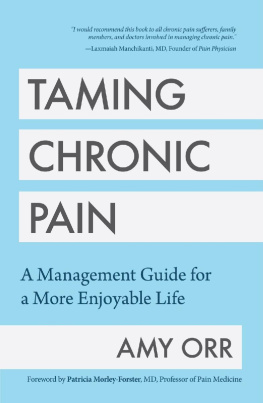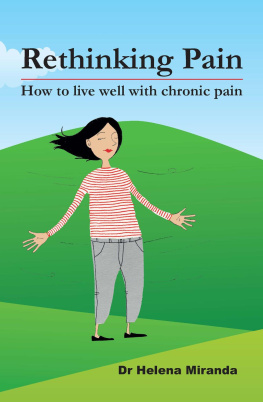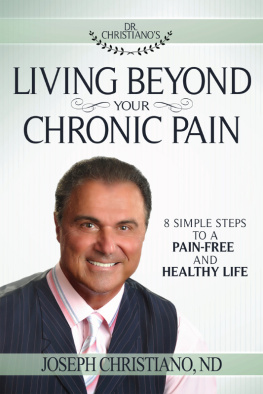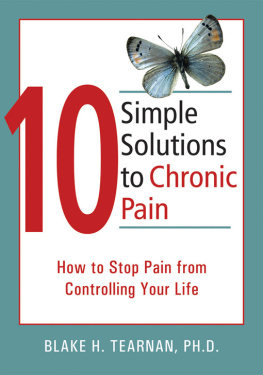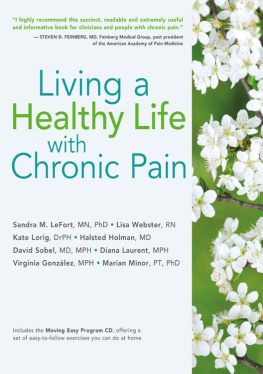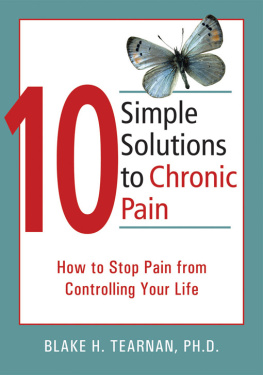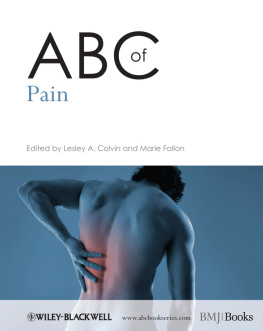

Published by EvidenceProfile APS., DENMARK
EvidenceProfile
Engsoeparken 91
7200 Grindsted, Denmark
Copyright Kim Kristiansen, 2013
All rights reserved. Without limiting the rights under copyright reserved above, no part of this publication may be reproduced, stored or introduced into a retrieval system, or transmitted, in any form or by any means (electronic, mechanical, photocopying, recording or otherwise), without the prior written permission of the copyright owner.
DoloTest is a registered trademark owned by EvidenceProfile, ApS,
Denmark. All rights reserved.
ISBN 978 8 79961 850 7 (print)
ISBN 978 8 79961 851 4 (mobi)
ISBN 978 8 79961 852 1 (epub)
Information provided by the author, in the absence of a visit with a healthcare professional, must be considered as an educational service only. This book is to provide you with information that will help you make your own healthcare decisions. Always consult any treatments or changes with your doctor.
If One Is Truly to Succeed in Leading a Person to a Specific Place, One Must First and Foremost Take Care to Find Him Where He is and Begin There.
This is the secret in the entire art of helping
Soren Kirkegaard, Danish Philosopher, 1813-1855
Foreword
First, I would like to thank Dr Kim Kristiansen for asking me to review his book The Empowered Pain Patient.
I first met Dr Kristiansen at 12th World Congress on Pain Glasgow, Scotland in the August of 2008 where he was then promoting his now well-known Dolo Test concept. Dr Kristiansen told me he was a GP, and in 2008 is was rare to meet a GP, who had an interest in persistent pain, but I could see then he also had an interest in how patients living with pain could begin to help themselves.
I love the title of this book, The Empowered Pain Patient as most people who see health care professionals can become disempowered. What happens is patients tend to leave their responsibilities/self-management skills at the entrance of the doctors door, leaving the doctor (or health care professional) to take over and provide all the answers.
The Empowered Pain Patient book is ideal to support and re-empower the patient in the self-management of their pain.
Reading through the book Dr Kristiansen has covered all the key areas from what persistent pain is, seeing the doctor, the everyday problems pain gives patients and most importantly how to self-management it.
I was really pleased to see he included a section called The Role of the Relative or Loved One. When pain affects a person, it is like a pebble hitting water, where the ripples extend outwards. Pain not only affects the patient, but also their family, friends and work colleagues.
Finally I love the stories within the book, about what happened to patients, and how they self-manage their pain. I think its so important for others to read about others experiences
Well done Dr Kristiansen, an excellent book which will be useful to patients living with pain, also doctors and healthcare professionals.
Peter Moore
Co-author of the Pain Toolkit
www.paintoolkit.org
Validated Pain Management at a Glance
- Validated Pain Management is ongoing customized pain management and enhanced shared decision making, based on individualized information about a patients pain and quality of life. DoloTest, a scientifically validated tool, allows the patient to take part in interpreting the test results. The pain and its impact are validated and acknowledged, and information avout pain mechanisms is individualized according to what the patient experiences.
- The patient, active in pain management, works with the health care professional(s) to set treatment goals and to evaluate and adjust the effects of treatment.
- The DoloTest includes a checklist to ensure that relevant items are covered, and the collection of tests documents and tells the story of the pain management process.
Introduction
I find it difficult and unsatisfying to work with chronic pain patients, a physician colleague once told me. I really want do my best to help my patients, to provide them with the best of care, to help and not harm, but somehow it just wont work with chronic pain patients. I try to treat them, follow guidelines and advice, but Im not sure it does any good. And then there is the risk of pill addictionoften I even feel guilty for not being able to help them. He continued, Its not like my diabetes or heart patients, who learn to live with their conditions and to take steps to manage them. In those cases, I can tell them when were on the right track or have even reached the goal
I asked him what he thought his patients wanted.
Well, I guess they want to get rid of their pain, but if thats not possible, to live the best possible life with the pain but without becoming addicted to medication, he answered.
But isnt that what you just said you wanted to provide? I asked.
Yeah, he answered, but somehow it just doesnt seem like that, and anyway, it just wont work!
I met a woman at a private get-together. She was thirty-two, out of law school, and had a good job. I was in the States on a business trip, she told me. I had a little pain in my back for a few days and assumed it was from sitting in the seat on the flight from Denmark. Then one morning I woke up with terrible pain in the lowest part of my back that went down the left leg, below the knee. In the emergency room, they took an MRI that came back normal. I was advised to stay active and was prescribed some pain medicine. After I got home, I was referred to a back pain specialist. He took a new MRI, and it was also normal. I was referred to physical therapy, and the doctor prescribed a light opioid. The physical therapist gave me some treatment, told me to stay active, and taught me some exercises. With the medicine, I suffered more or less all the bad side effects, and since it had no effect on the pain, I stopped taking it. After a year I was still in pain. I can manage my job, I have learned to live a life with the pain, but I have not had a good nights sleep for a year, and somehow I feel changed in a way I cant explain. I went back to my doctor a while ago. He told me that I could get a new prescription of the same medicine and be referred to the specialist again. I declined based on my experience and have not sought treatment againand I dont want to, because if that is what modern medicine has to offer, Im better without it.
This book is about how pain management can be improved or, rather, transformeda book about how a shared understanding between the person living with chronic pain and the health care provider can ultimately benefit both the patient and the physician. This is a book for people like my colleague and the woman I met at the get-together, who basically want the same positive outcome for people living with pain. Shared understanding and shared goals for pain management, based on real evidence, can improve outcomes, reduce risk of addiction, and make the process more rewarding for the patient and the clinician. I call it Validated Pain Management. Only the person living with pain can experience it and know how it affects his or her life. Often, someones pain is invalidated, which can be frustrating. In the pain management system I describe in this book, the experience of pain and its impact is made clear: it is validated.
Next page

